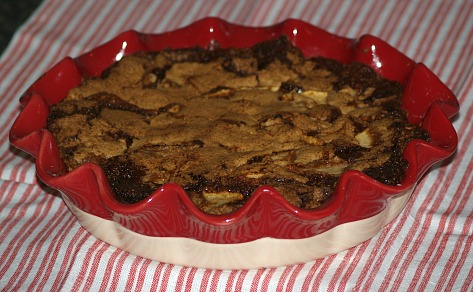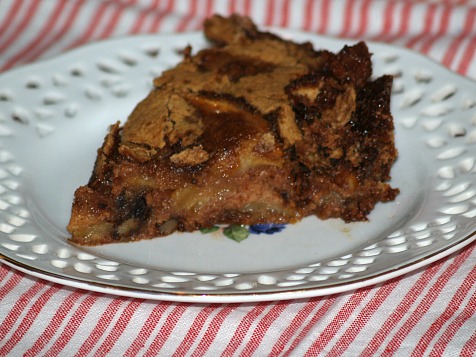- Painless Cooking
- Cakes
- Problems and Solutions
How to Make a Cake, Tips and Problems
I learned how to make a cake when I was very young; about nine years old after I got down the cookie baking. From this very young age I was so impressed with cake baking. This is a part of the desserts that can be as common and simple as baking a cake in the pan with no icing to the most elaborate of desserts.
When learning how to make a cake, although there are five or more different types of cakes, most cakes will simply fit into two categories; creamed and foam. Most layer cakes, loaves such as pound cakes and cupcakes are made with a solid shortening, butter or margarine, therefore needing to be creamed before adding dry ingredients. The foam cakes require beating eggs or egg whites to make the cake light and fluffy; these include sponge, angel food and chiffon cakes.
Since I learned how to make a cake, I have always tried to use the best top quality ingredients. Once I got use to an ingredient brand, I never liked to change. Each brand can vary tremendously affecting the result of your cake; I have experienced this in different cake flours. The only way I would try another ingredient is if someone really bragged on another product then I would give it a try.
Recently, I gave a new brand of chocolate liqueur a try. I have always used the Godiva brand of chocolate liqueur. The man in the liquor store talked me into buying an Italian brand exaggerating how much better it is. I gave it a try but much to my disappointment; it was in no comparison with the Godiva brand. My baked product was not near as good. Since I wouldn’t use this Italian brand I also lost money and I am not one who likes to waste money!
When you learn how to make a cake, make it a habit of carefully reading all the way through your recipe before beginning. Assemble all ingredients and utensils that you will need for making a cake. Stick with the ingredients called for in the recipe, don’t substitute. There can be a big difference between butter and margarine or baking soda and baking powder. After gaining experience in cake baking, you will learn exactly what can safely be substituted for what other ingredients.
RAW APPLE CAKE RECIPE
As you learned in how to bake a cake, cakes can be baked in different cake pan sizes and shapes. This cake is baked in a pie plate or pie pan and is delicious served with ice cream while still warm.
- 3 Tablespoons butter
- 1 Cup sugar
- 1 Egg
- ½ Cup chopped nuts
- ¾ Teaspoon cinnamon
- ¾ Teaspoon nutmeg
- ½ Teaspoon salt
- ½ Teaspoon baking powder
- 1 Teaspoon baking soda
- 1 Teaspoon vanilla
- 1 ¼ Cups flour
- 3 Cups peeled and sliced fresh apples
Preheat oven to 350F degrees.
Combine and mix well butter, sugar, and egg.
Add remaining ingredients and mix only until blended.
Spread in a greased and floured pie pan and bake 40 to 45 minutes.
NOTE: This is very dry batter; press it firmly into prepared pie dish.
It is necessary to learn the correct way of measuring the ingredients in the recipe when learning how to make a cake. Use a graduated set of measuring cups for dry ingredients and for liquids use a glass or plastic measuring cup with a pouring lip. The same set of measuring spoons can be used for dry and liquid ingredients. To measure dry ingredients (except brown sugar) lightly fill cup and level off with a flat knife. Brown sugars are always filled and packed so it holds its shape when dumped out (unless recipe instructs otherwise). Measuring dry ingredients in the spoons are also level off unless instructed to do otherwise. Liquids are measured to the tops of the spoons or to the line called for on the measuring cups.
When you know how to make a cake and you have a lot of experience, you will pretty much be able to combine and mix a cake even without instructions if it should be necessary. While learning pay careful attention to combining and blending the cake ingredients as the recipe tells you to do. Most of the time cakes which have solid shortening in the recipe will be creamed with the sugar and eggs beating until light and fluffy before adding dry ingredients. Sponge recipes, especially those containing beaten egg whites require special attention to ensure a top quality baked cake. After beating egg whites until stiff, usually you would fold in the sifted dry ingredients gently by hand only until the whites are barely seen in the batter.
CAKE PROBLEMS and possible causes when learning how to make a cake.
- If a cake falls the oven might not be hot enough, it is due to under mixing, insufficient baking time, opening the oven door during the baking, too much leavening, sugar or liquid.
- If a cake peaks too much in the center it could be due to oven too hot at the start of the baking, too much flour in the recipe, not enough liquid in the recipe.
- If the cake sticks to the pan, the pan was not properly prepared with grease and flour or it was left too long cooling in the pan.
- If a cake cracks and falls apart the cake was removed from the pan too soon or the recipe had too much shortening, sugar or leavening.
- If the cake crust is too sticky the cake had insufficient baking time, the oven was not hot enough or the recipe had too much sugar in it.
- If a cake texture is too heavy (I find often in homemade white cake recipes) it is caused by over mixing after the flour and liquid have been added, flour not measured and sifted enough, oven temperature too low or too much shortening, sugar or liquid.
- If the texture of a cake is too coarse it could be not enough mixing during the creaming process, the oven temperature was too low or there was too much leavening in the recipe.
- If a cake is too dry it could have been over baked, the egg whites were over beaten, too much flour or leavening or not enough shortening or sugar.






